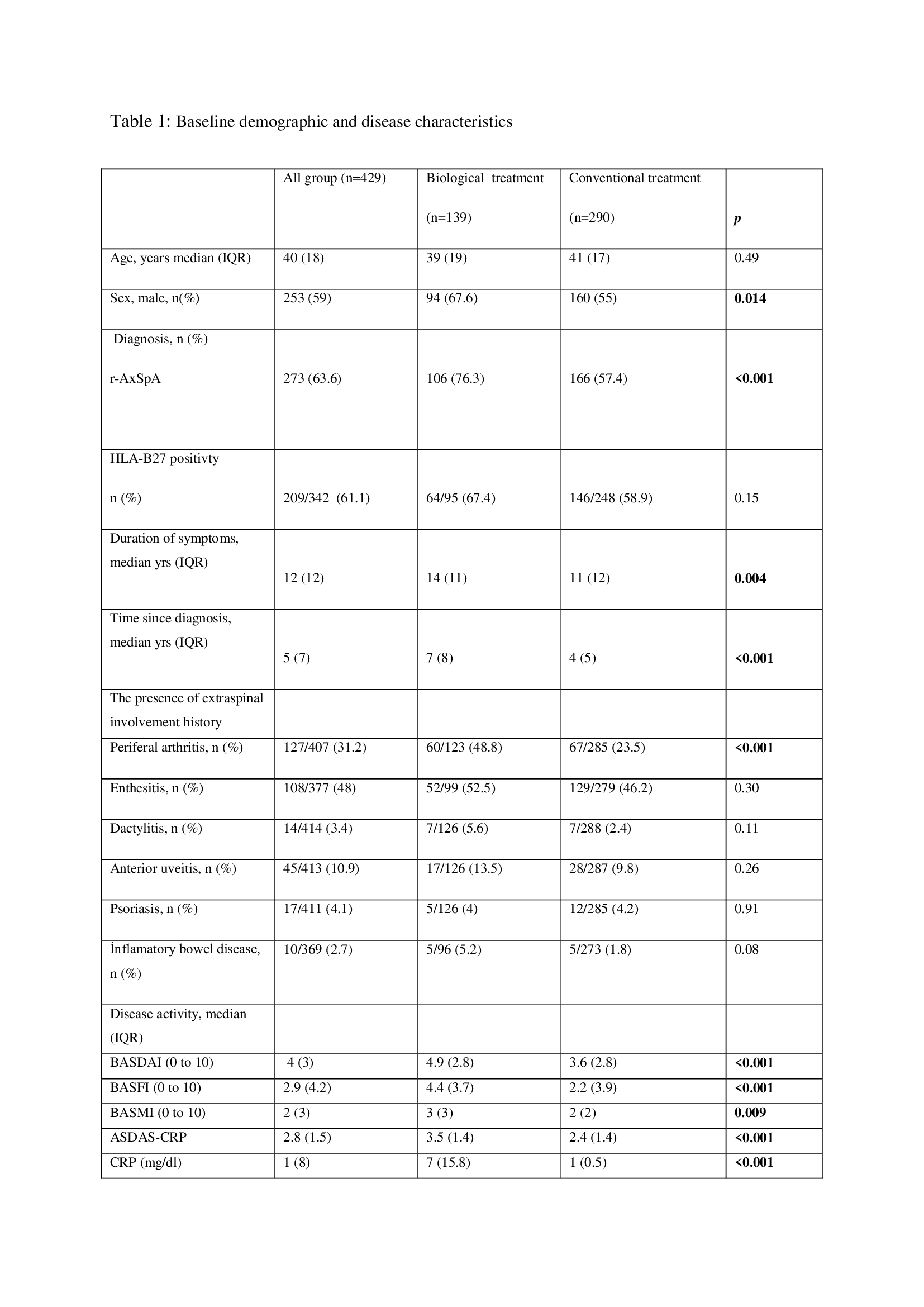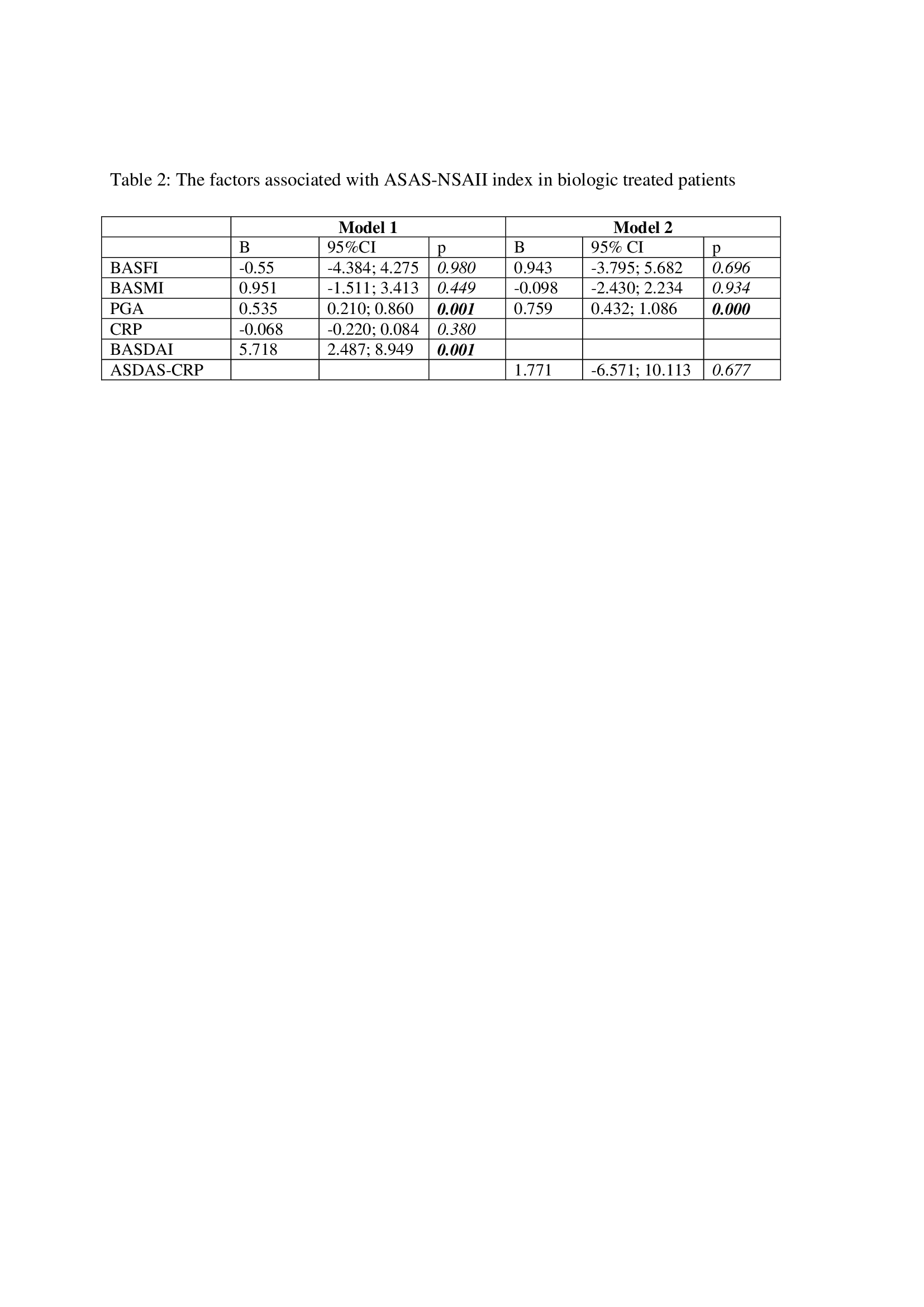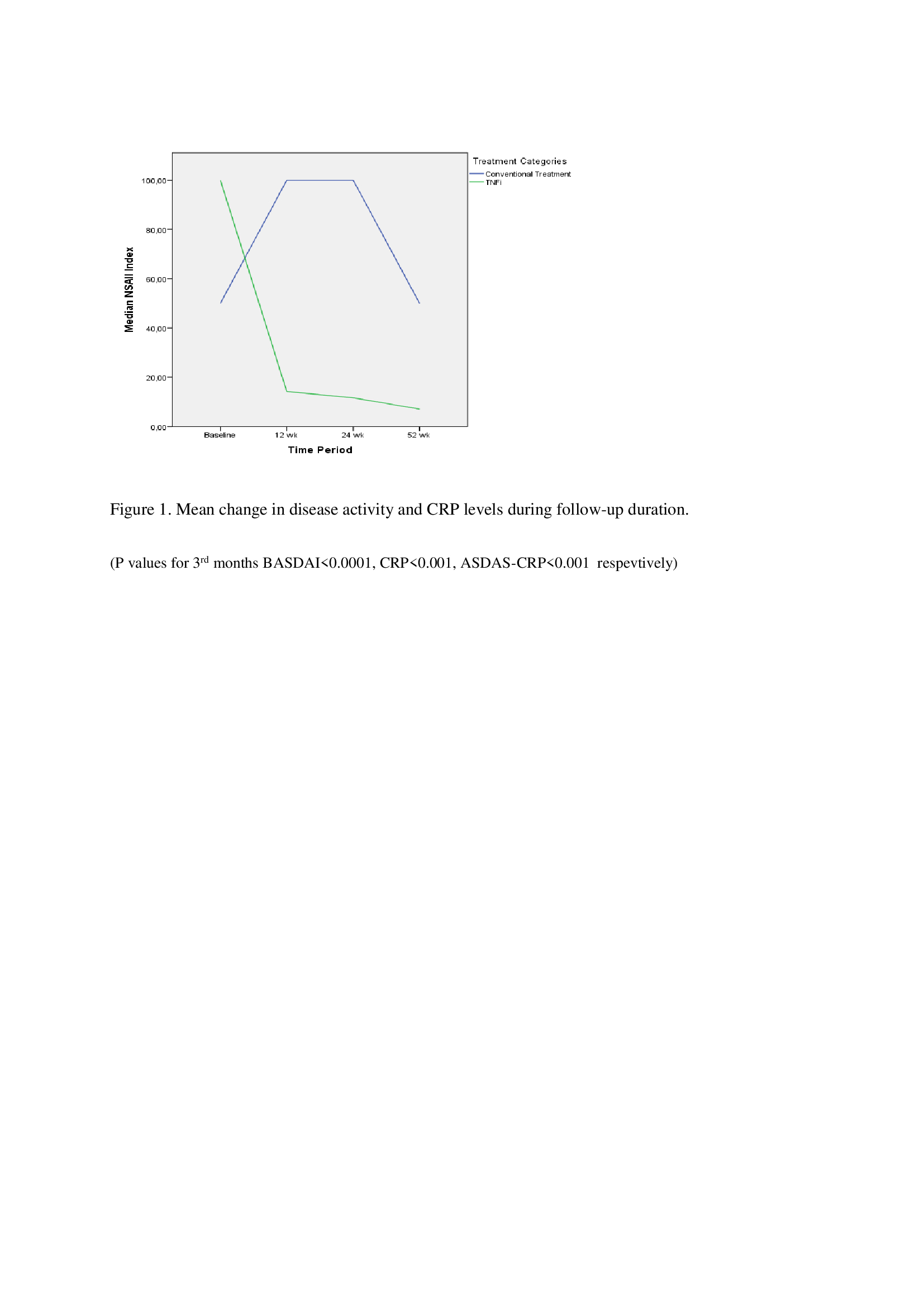Session Information
Date: Sunday, November 7, 2021
Title: Spondyloarthritis Including PsA – Treatment Poster I: Axial Spondyloarthritis (0908–0939)
Session Type: Poster Session B
Session Time: 8:30AM-10:30AM
Background/Purpose: Bacground: Non-steroidal anti-inflammatory drugs (NSAIDs) is the first line treatment option in axial spondyloarthritis (axSpA) patients suffering from pain and stiffness. However there is only limited data regarding the concomitant use of NSAIDs during tumour necrosis factor inhibitor (TNFi) treatment.
Objectives: To evaluate longitudinal concomitant NSAIDs use with the TNFi treatment and the determinant of the ASAS-NSAID index in patients with axSpA.
Methods: In total 429 axSpA patients (253 [59%] male; 272 [63%] with AS and 157 [37%] with nonradiographic (nr)-axSpA) who have followed up one year were included in this observational study (Table 1). The data regarding disease activity and serum CRP levels were collected on 12, 24 and 52nd week. At each visit NSAID usage, type, dosage and frequency were recorded in order to calculate ASAS-NSAID index. The longitudinal relationship between NSAID-index and other factors tested by using generalized estimating equations (GEE) which is a technique for longitudinal data analysis allowing the use of all available data even deviated from normality
Results: At baseline 127/138 (92%) patients starting TNFi and 239/291 (82%) conventionally treated patients were using NSAID. Both the rate (p=0.007) and the median (IQR) ASAS-NSAID index were higher in biologic treatment group (100 [50] vs 70.8 [89.4]; p< 0.001). During follow-up ASAS-NSAID index was decreased significantly in patients treated with TNFi (median 100 to 8.0;p< 0.001), however ASAS-NSAID index was not changed in conventionally treated patients (p=0.154) (Figure 1). In univariate longitudinal analysis revealed that ASAS-NSAID index was significantly associated with BASDAI, ASDAS, BASFI scores and patient global assessment of disease activity, serum levels of CRP and education. We established two multivariable models (Table 2) to assess the associated factors/covariates with ASAS-NSAID index over time (one with ASDAS and the other BASDAI+CRP as disease activity index) and showed that BASDAI and patient global assessment of disease activity were independent determinants of NSAID dosage in biologic treated patients. However, in multivariate analysis there was no significant predictor for NSAID index in conventional treatment group.
Conclusion: Our results showed that NSAID prescription was significantly higher in axSpA patients who have TNFi indication. NSAID use was decreased significantly over time with TNFi and still independently determined by disease activity. However, it is stable in conventionally treated axSpA patients.
To cite this abstract in AMA style:
Ediboglu E, Solmaz D, Kabadayi G, otman e, Cinaklı H, Alp G, Erpek E, Gücenmez S, Ozmen M, Akar S. Non-steroidal Anti-inflammatory Drug Use Is Associated with Disease Activity and Reduced Significantly in Patients with Axial Spondyloarthritis Treated with Tumor Necrosis Factor Inhibitors; Data from a Real Life Experience [abstract]. Arthritis Rheumatol. 2021; 73 (suppl 9). https://acrabstracts.org/abstract/non-steroidal-anti-inflammatory-drug-use-is-associated-with-disease-activity-and-reduced-significantly-in-patients-with-axial-spondyloarthritis-treated-with-tumor-necrosis-factor-inhibitors-data-from/. Accessed .« Back to ACR Convergence 2021
ACR Meeting Abstracts - https://acrabstracts.org/abstract/non-steroidal-anti-inflammatory-drug-use-is-associated-with-disease-activity-and-reduced-significantly-in-patients-with-axial-spondyloarthritis-treated-with-tumor-necrosis-factor-inhibitors-data-from/



